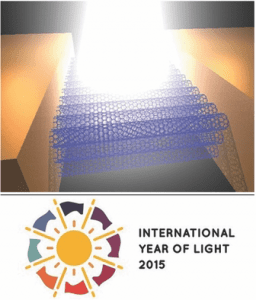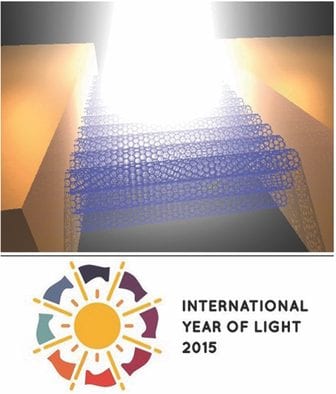2015 is the International Year of Light, proclaimed by the United Nations to recognize the achievements of light science and its applications, and its contributions to humankind. It will raise special attention for major topics and key technologies in the field of optics and photonics. Advanced Optical Materials contributes to this goal through publishing a special series of outstanding review articles.
 Carbon nanotubes are unique one-dimensional materials defined by a cylindrical and hollow sructure with the length-to-diameter ratio of up to ~100,000,000:1. The wall of individual carbon nanotubes is formed by one-atom-thick sheets of carbon, giving exceptional strength. These tiny tubes have unique properties. In particular, their optical properties present great opportunities for novel optoelectronic devices. They exhibit very strong optical absorption and emission with energies determined by the geometry of each nanotube. A 100-nm-thick film of carbon nanotubes without any treatment can absorb more than 70% of incident light, over the whole range of the electromagnetic spectrum, including the ultraviolet, visible, infrared, terahertz, and microwave. These properties render carbon nanotubes promising materials for various optoelectronic devices including photodetectors and solar cells. During the last decade, photodetectors constructed with carbon nanotubes or the combination of them with other materials have attracted much attention, and have been explored extensively.
Carbon nanotubes are unique one-dimensional materials defined by a cylindrical and hollow sructure with the length-to-diameter ratio of up to ~100,000,000:1. The wall of individual carbon nanotubes is formed by one-atom-thick sheets of carbon, giving exceptional strength. These tiny tubes have unique properties. In particular, their optical properties present great opportunities for novel optoelectronic devices. They exhibit very strong optical absorption and emission with energies determined by the geometry of each nanotube. A 100-nm-thick film of carbon nanotubes without any treatment can absorb more than 70% of incident light, over the whole range of the electromagnetic spectrum, including the ultraviolet, visible, infrared, terahertz, and microwave. These properties render carbon nanotubes promising materials for various optoelectronic devices including photodetectors and solar cells. During the last decade, photodetectors constructed with carbon nanotubes or the combination of them with other materials have attracted much attention, and have been explored extensively.
In this article, Junichiro Kono (Rice University, Houston) and co-workers give a comprehensive review of progress made on carbon nanotube-based photodetectors in research labs since 2001. It covers a broad range of carbon nanotube photodetectors of diverse types, architectures and working ranges. The detectors presented in this article possess potential for applications, including remote sensing, night vision, reconnaissance, medical imaging, thermal imaging, and chemical detection. They give a comparative summary of the main performance metrics for such detectors, discussing advantages as well as deficiencies of each type of detector. Also an outlook for further improvements of detector performance is presented.
The full series can be found at www.advopticalmat.de/IYL. All articles are published in Advanced Optical Materials and added to this virtual issue over the year.

















